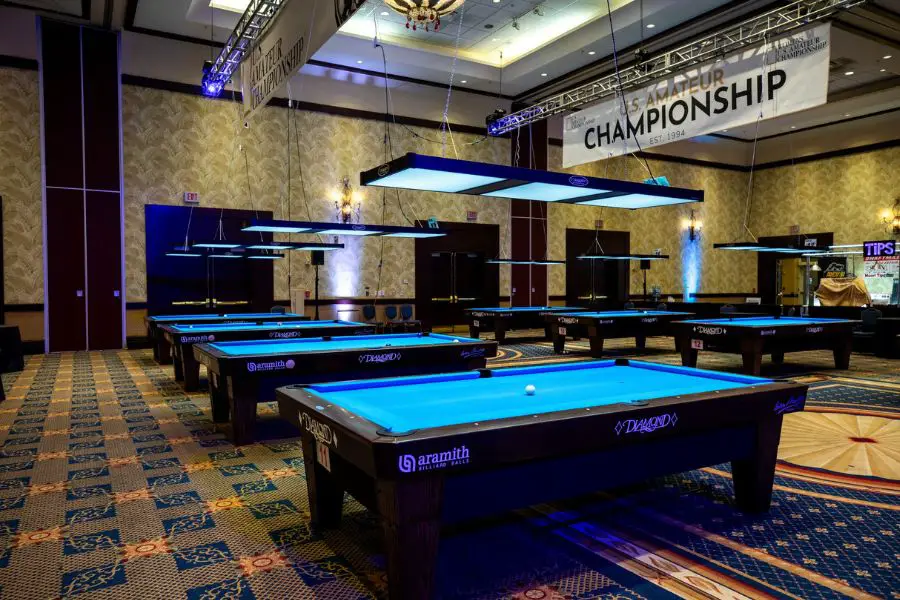When it comes to cue sports, several variations often get mixed up or confused with one another. Two popular cue sports that are often compared are Snooker and American Pool.
While they may appear to be similar at first glance, several key differences set them apart.
In this article, we will explore the differences between snooker and American pool to understand how they differ and what makes each of them unique.
Understanding the Basics
Before we delve into the differences between snooker and American pool, it’s important to understand the basics of each game.
Snooker
Snooker is a cue sport that is played on a rectangular table covered with green baize, with six pockets, fifteen red balls, six “color” balls, and a cue ball.
The game is typically played with 2 to 4 players, and the objective is to score more points than the opponent by potting the balls in a specific sequence and accumulating points based on the value of the balls potted.
American Pool
American pool, on the other hand, is a cue sport that is played on a larger table with six pockets, cue balls, and numbered object balls.
The game is usually played with two players, and the objective is to pocket all of your designated balls (either stripes or solids) and then the 8-ball to win the game.
Differences Between Snooker and American Pool

Now that we understand the basic concepts of both snooker and American pool, let’s explore the key differences between the two cue sports.
Table Size And Pocket Openings
One of the most obvious differences between snooker and American pool is the size of the table and the dimensions of the pockets. A standard snooker table is larger than an American pool table, measuring in at 12 feet by 6 feet, while a typical American pool table is 9 feet by 4.5 feet.
Additionally, the pockets on a snooker table are smaller and have rounded edges, making potting balls more challenging, whereas the pockets on an American pool table are larger with straighter edges, allowing for easier potting of balls.
Ball Size And Cue Differences
Another notable difference is the size of the balls and cues used in each game. In snooker, the balls are smaller and lighter, and the cues have a smaller tip, which requires a different technique and level of precision compared to the American pool.
In the American pool, the balls are larger and heavier, and the cues have a larger tip, allowing for more power and control when striking the balls.
Scoring And Game Rules
The scoring system and game rules also differ between snooker and American pool. In snooker, players must alternate between potting red balls and colored balls, with each ball carrying a specific point value. The game continues until all balls are potted, and the player with the highest score wins.

In the American pool, players are assigned either stripes or solids, and they must pocket all of their designated balls before attempting to pot the 8-ball to win the game.
Strategy And Skill Sets
Due to the differences in table size, ball size, pocket openings, and game rules, snooker and American pool require different strategies and skill sets.
Snooker demands a high level of precision, positioning, and finesse due to the smaller balls and tighter pockets, while the American pool places emphasis on ball control, power, and strategic shot-making to outmaneuver the opponent.
Final Thoughts
While both snooker and American Pool are cue sports that share some similarities, such as the use of cues and balls, they are distinct in terms of table size, pocket openings, ball size, game rules, and required skill sets.
Whether you prefer the precision and strategy of snooker or the power and control of American pool, both cue sports offer unique challenges and enjoyment for players of all skill levels.
Next time you find yourself at a billiards hall, take the opportunity to try both Snooker and American Pool to experience the differences firsthand and appreciate the nuances of each game.






